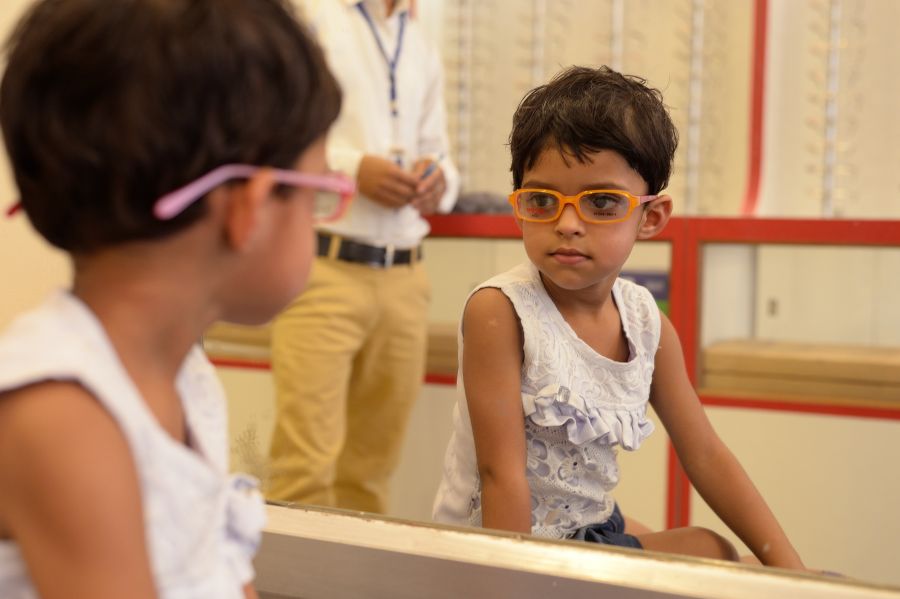
What is Universal Health Coverage (UHC) and why is it important?
At the United Nations General Assembly, world leaders adopted the goal of working together to achieve UHC by 2030 as part of the Sustainable Development Goals (SDGs). Currently, more than half of the world’s population lacks access to essential health services. Those living in poverty are even more disadvantaged by having to pay for these services, pushing them even further into the cycle of poverty. In a world with UHC, every woman, girl, man and boy would have access to essential health services without facing a financial burden or exclusion.
At the Devex UHC Pavilion, I had the opportunity to hear from global leaders who discussed these challenges and shared insights about how we can work towards achieving the goal of UHC. Many ideas were shared, and it is clear UHC will not be achieved alone; we need to build collaborative, multi-sector partnerships that bring together a range of perspectives and expertise. Our beneficiaries must be at the centre of our solutions; a human-centred approach is essential to ensure we are fully meeting the needs of the end user. Further, we need to build scalable and sustainable models that can attract private sector investment to our solutions. Most importantly, through all of this we need to ensure we leave no one behind – that means developing innovative models to reach the most underserved and marginalized communities.
Uncorrected poor vision is the world’s largest unaddressed disability, with one in three people being affected – 90 percent of which live in developing countries (Essilor). Even more alarming, this costs our global economy US$272 billion in lost productivity every single year (Essilor).
Poor vision is a public health crisis, and it is both a cause and consequence of poverty. Those who live in poverty are more susceptible to vision impairment because of lack of access to primary health services, poor hygiene and sanitary conditions, and cultural stigmas around vision correction. When a person living in poverty can properly see, they become an active, engaged member of their community, and they no longer face the burden of being shamed for their disability.
An estimated US$14 billion is required to create a world free from uncorrected refractive errors (Essilor). This sounds like a lot, but it is achievable – with commitment and action from governments, the private sector, civil society organizations and global citizens.
Together, we can improve the lives of millions of people by preventing blindness and restoring sight. A simple pair of eyeglasses enables individuals to return to work, provides children with the opportunity to attend and succeed at school, and increases one’s safety and well-being.
Operation Eyesight partners with local hospitals and governments to provide quality eye care services to everyone – regardless of gender, age or ability to pay. We work to address the root causes of avoidable blindness and remove barriers to access for women and men alike. Our innovative community outreach model trains community health workers – typically women who live and work in our target communities – to conduct door-to-door eye screenings and educate families about eye health and general health topics such as prenatal care, nutrition and immunization. This approach allows us to reach women and girls who might otherwise go unreached, ensuring those with eye health issues are referred to a partner hospital or vision centre for treatment.
Enabling individuals to reach their full potential benefits us all. We have made significant strides in addressing poor vision, but there is still much work to be done. We have an opportunity to collectively address one of the world’s largest public health challenges and improve the lives of millions while doing so.
On World Sight Day, October 10, I invite you to join us as we transform lives – For All The World To See.
Operation Eyesight is an international development organization working to prevent blindness and restore sight in developing countries. We work in partnership with local governments, hospitals and community development teams, building essential resources that give all people, including the poorest, access to the help they need. We’ve developed an innovative model of hospital-based community eye care that ensures sustainable service for entire communities.
Published:
September 27, 2019
Author:
Danielle Gibbie, Director, Institutional Partnerships, Operation Eyesight
Categories:
SHARE THIS POST: